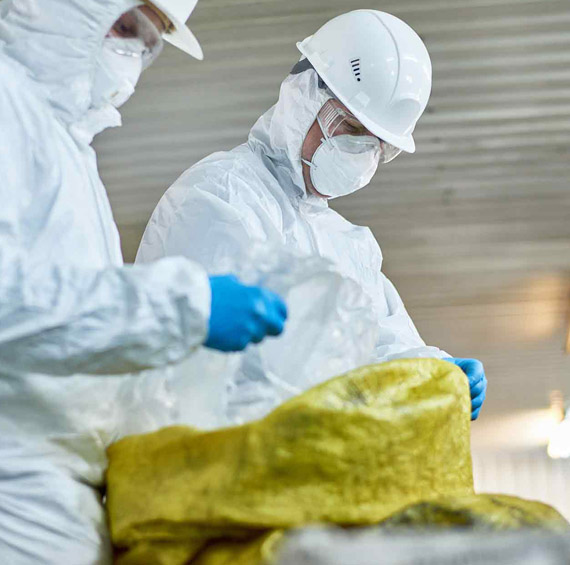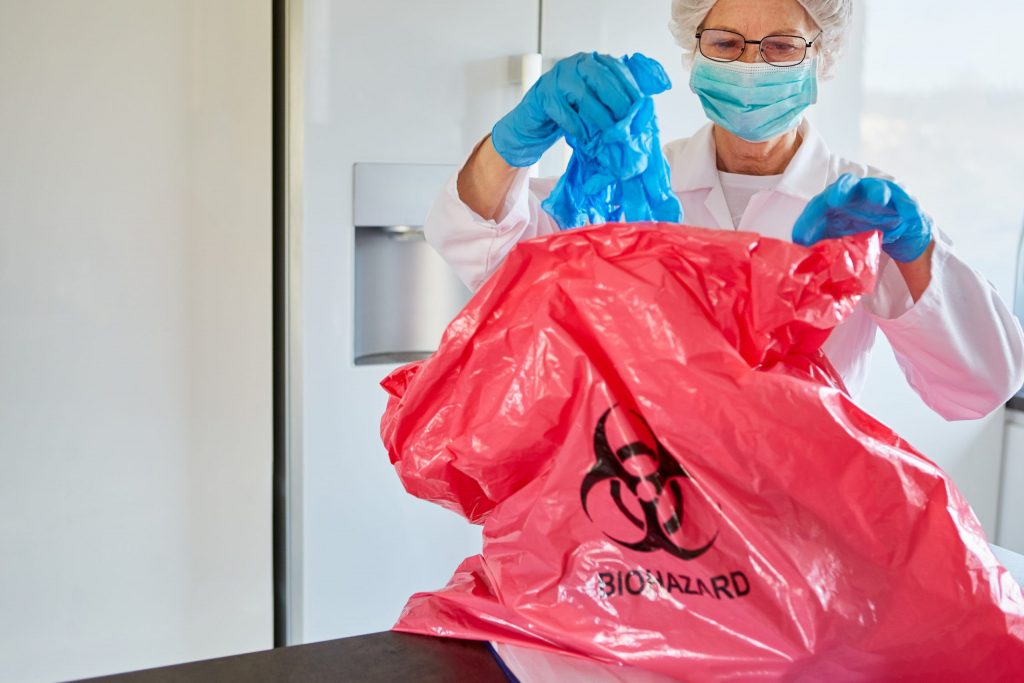Biohazard Removal: Safe Handling and Disposal of Hazardous Products
Biohazard Removal: Safe Handling and Disposal of Hazardous Products
Blog Article
Professional Biohazard Cleansing and Decontamination for Blood, Bodily Fluids, and Hazardous Materials
The possible wellness dangers linked with direct exposure to biohazards highlight the essential demand for precise handling and comprehensive cleanup. As we navigate the intricate landscape of biohazard cleanup, recognizing the nuances of laws, conformity, and the customized devices at play becomes necessary in guaranteeing a detailed and risk-free decontamination procedure.
Wellness Threats of Biohazard Direct Exposure
Exposure to biohazards presents substantial health threats that can result in extreme effects for neighborhoods and people alike. Biohazards encompass a variety of organic substances, consisting of blood, physical fluids, mold, germs, infections, and other potentially contagious materials. When individuals enter call with these biohazards, whether with accidents, inappropriate handling, or environmental exposure, they deal with the danger of having serious ailments or illness.
Among the primary health threats linked with biohazard exposure is the transmission of infectious conditions. Bloodborne microorganisms such as HIV, hepatitis B and C, and numerous bacteria can be existing in biohazardous products, presenting a straight threat to human wellness. Breathing in airborne biohazards like mold spores or entering contact with contaminated surfaces can likewise result in breathing problems, allergies, and other negative health and wellness impacts.
Additionally, biohazard direct exposure can have long-term wellness effects, with some conditions materializing years after the initial call (Blood Cleanup). Consequently, it is vital to focus on correct biohazard cleansing and decontamination to minimize these health dangers and make certain the safety and security of people and communities

Specialized Educating for Biohazard Clean-up
When it pertains to taking care of biohazard cleaning effectively and securely, specialized training plays an essential duty in making certain correct decontamination procedures are adhered to. Biohazard cleaning needs particular expertise and abilities to efficiently reduce dangers related to bloodborne microorganisms, bodily liquids, and unsafe products. Specialists educated in biohazard cleanup undergo strenuous direction on how to safely manage, remove, and throw away biohazardous materials to avoid contamination and direct exposure.
Specialized training for biohazard cleanup covers a range of vital topics, consisting of correct individual safety tools (PPE) use, bloodborne virus recognition, purification techniques, and contaminated materials disposal protocols. People educated in biohazard clean-up are outfitted with the necessary proficiency to evaluate contamination levels, recognize prospective dangers, and carry out proper clean-up procedures in compliance with regulative standards.
Continual training and education are vital in the area of biohazard cleaning to stay updated on the most up to date decontamination modern technologies, safety and security protocols, and policies. By buying specialized training, biohazard clean-up specialists can properly respond to emergency cleaning circumstances and secure both public health and wellness and the environment.
Importance of Correct Decontamination Methods
Using appropriate purification strategies is important in biohazard cleanup to properly reduce and get rid of dangerous materials health threats. Reliable decontamination not only ensures the elimination of visible traces of blood, bodily liquids, and various other biohazards but also targets unseen pathogens that may position serious health and wellness risks if not effectively gotten rid of. By following rigorous purification methods, educated professionals can considerably decrease the danger of exposure to dangerous bacteria, viruses, and bacteria that might cause conditions or infections.
Correct decontamination techniques involve using specific devices and anti-bacterials that are particularly designed to counteract biohazards efficiently. Comprehensive cleaning and disinfection of contaminated locations are necessary to stop the spread of pathogens and make certain a risk-free atmosphere for residents. Additionally, the appropriate disposal of biohazardous waste adhering to purification procedures is essential in preventing contamination of various other surface areas or individuals.

Tools and Devices for Safe Cleanup
When dealing with blood, bodily liquids, or unsafe materials, biohazard cleansing specialists count on specialized equipment to reduce exposure dangers and thoroughly sanitize the damaged area. In addition, biohazard cleansing sets consisting of disinfectants, absorptive materials, and biohazard bags are made use of to securely get rid of and contain of infected items.
Advanced cleansing devices like hospital-grade anti-bacterials, HEPA-filtered vacuums, and fogging devices are used to sanitize surfaces and remove biohazards effectively. Specialized equipment such as sharps containers and biohazard garbage disposal bins are made use of to securely handle sharp objects and biohazardous waste products. By utilizing the appropriate tools and tools, biohazard cleansing professionals can ensure an extensive cleanup process that focuses on have a peek here security and decreases health risks for both employees and occupants of the affected space.
Laws and Conformity in Biohazard Cleaning
Proper adherence to laws and conformity criteria is paramount in biohazard cleansing to ensure the security of both personnel and the environment. Federal government firms such as OSHA (Occupational Safety And Security and Health Administration) and the EPA (Epa) have actually developed specific standards for biohazard cleaning treatments to reduce health risks and environmental contamination. These regulations cover a series of facets consisting of the handling, transportation, and disposal of biohazardous materials, along with the essential training and safety tools needed for employees associated with the clean-up procedure.
Biohazard cleansing companies need to remain updated with these laws to ensure that their procedures fulfill the called for safety and security requirements. Failure to conform with these regulations can lead to extreme consequences, consisting of fines, lawful activity, and endangering the health and wellness of individuals and the setting. By adhering go to website to rigid laws and compliance steps, biohazard cleansing firms can effectively alleviate risks and make certain a secure and comprehensive cleanup procedure for all events entailed.
Final Thought
To conclude, biohazard cleaning and decontamination call for customized training, proper methods, and adherence to policies. Exposure to blood, physical liquids, and dangerous materials postures significant health risks, making it important to make use of the appropriate tools and devices for risk-free cleanup. By complying with stringent methods and standards, specialists can properly reduce the threats connected with biohazard exposure and guarantee the safety of both themselves and others.
As we browse the detailed landscape of biohazard cleanup, understanding the nuances of policies, compliance, and the specialized tools at play becomes important in making certain a risk-free and recommended you read extensive purification process. (Blood Cleanup)
When it comes to taking care of biohazard clean-up efficiently and safely, specialized training plays a basic role in making certain appropriate purification procedures are complied with.Using correct purification techniques is crucial in biohazard cleaning to properly get rid of dangerous materials and minimize health risks. Furthermore, biohazard cleaning sets having anti-bacterials, absorptive materials, and biohazard bags are made use of to safely have and get rid of of infected products.
Federal government firms such as OSHA (Occupational Security and Wellness Administration) and the EPA (Environmental Protection Firm) have actually developed specific standards for biohazard cleaning procedures to decrease health and wellness risks and ecological contamination.
Report this page